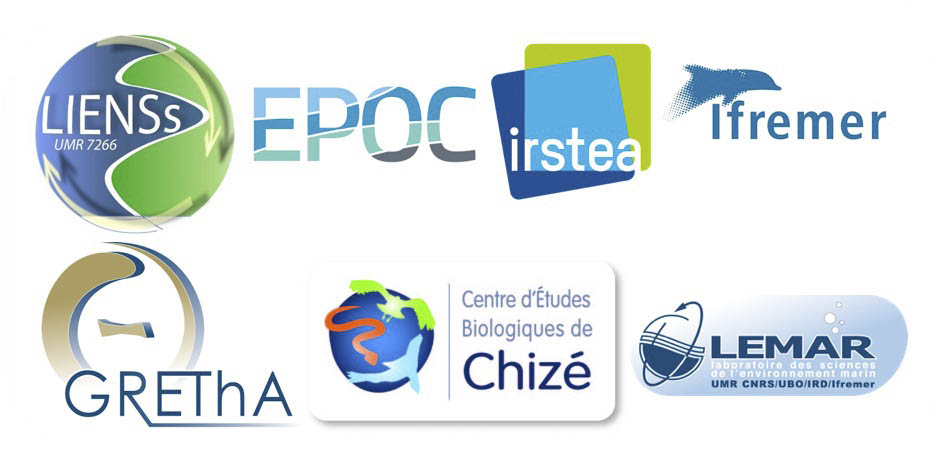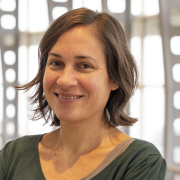Copyright : Laboratoire LEMAR- 2018
Marie Vagner, Thomas Lacoue-Labarthe (UMR LIENSs), Nicolas Bécu (UMR LIENSs) et Nathalie Long (UMR LIENSs)
National
ANR PRC
Start Date
04/04/2025
End Date
04/04/2025
PAMPAS focuses on the future of the coastal marshes of Charente-Maritime and their management against the marine submersion hazard. This project makes the choice to approach this question through the prism of the patrimonial identity to go beyond the classical approaches of evaluation of the conservation ecology, of the economy and of the management of the cultural heritage, all considered insufficient to apprehend the heritage, understood as the particular articulation between the components of a marsh participating in its collective identity. PAMPAS therefore aims to lift this lock by an interdisciplinary approach applied to three study areas (the marshes of Fier d’Ars, Tasdon, and Brouage), contrasting both in terms of natural heritage, cultural, landscape and management (dikes, in project of reopening to the sea, in debate of laissez-faire or diking, respectively).
Built on a collective approach (co-coordinated by four researchers) and participatory engineering (interdisciplinary co-construction workshop) allowing to cross the expertise in Human and Social Sciences, Life Sciences and Earth Sciences and those of the managers of marsh (49 people from 13 units, 9 disciplines), PAMPAS focuses on three major objectives:
- 1) to characterize the natural functions (biodiversity, biogeochemical functioning and ecosystem functions), cultural (heritage trajectory of property) and landscape (recognition landscape elements by the users and development) of the marshes and integrate these different components into a spatial representation of the heritage identity;
- 2) to define from the socio-ecosystem point of view, the response of these components to the marine submersion hazard: after having characterized physically the submersion hazard, the study of the short-term effects on the heritage components will help to develop a global representation of the socio-ecosystem both in terms of functionalities, services, but also in terms of resilience or ability to adapt to the hazard. The effects at the 100-year scale will also be addressed through the past evolution of territories characterized by contrasting hydrodynamic contexts.
- 3) these results will be confronted with the different management practices on the selected sites in order to define evolution scenarios of their heritage identity and evaluate their adaptive potential. This axis includes (i) an analysis of the management methods determining the possible evolutions of the patrimonial identity, following the submersion, (ii) a discussion of the results with managers and the locally elected representatives, using an interactive tool of cartography and focus groups, to discuss the transition of these territories and adaptive management modalities of marshes, and (iii) dissemination of results towards users and the general public to feed an ecosystem vision of marshes exposed to marine submersions.
Ultimately, and based on a revised definition of patrimonial identity adapted to marsh areas, PAMPAS will bring new solutions for sustainable management, by transmitting economic, cultural and ecological knowledge. The stakes and the project issues therefore go far beyond the local level and concern wetlands at the global level for which it is now necessary to review the analysis and management frameworks by integrating the heritage into its various social and ecosystem dimensions.

Laboratory Members
Contributors
Collaborateurs scientifiques :
LIENSs : T. Lacoue-Labarthe, N. Bécu, N. Long, P. Bocher, E. Chaumillon, C. Dupuy, S. Sablé, H. Montanié, H. Agogué, C. Lefrançois, I. Arnaudin, I. Lanneluc, H. Thomas, J.-M. Carozza, N. Imbert Auvray, L. Murillo, V. Huet, O. de Viron, C. Pignon-Mussaud, V. Becquet, E. Pante, J. Fort, X. Bertin, E. Dubillot, M. Bréret, N. Lachaussée, P. Pineau ; * LETG : P. Stéphan ; * CRHIA : M. Augeron ; * CRIHAM : T. Sauzeau ; * FMA : P. Boudeau, J. Hubert, F. Blanchet
EPOC : V. David, S. Schmidt, A. Coynel; * GEO-Transfert: E. Maneux
ETBX (IRSTEA) : N. Rocle, C. Cazals, A. Gassiat ; * ART-Dev : A. Rivaud
CEBC : F. Brischoux; * ECOBIO : J. Pétillon
Ifremer : P. Polsenaere ; * ISPA : E. Lamaud
GREThA : S. Ferrari, S. Lavaud, J.-C. Pereau, P. Point
* laboratoires associés au partenaire indiqué en gras
Collaborateurs du territoire :
Ligue de Protection des oiseaux, Réserves Naturelles Nationales, Forum des Marais Atlantiques, Pays de Marennes-Oléron, Conservatoire du Littoral, Unions des Marais, Communauté d’Agglomération de La Rochelle.







